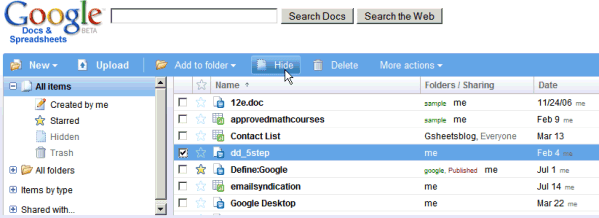
Feeds are usually associated with blogs and news sites, but they can be used for many other purposes like delivering search results (Yahoo Search, Google Blog Search), software updates or personalized content. Feed readers treat feeds in many ways:
1. Email messages
Mail clients like Outlook, Thunderbird, Opera M2, but also Yahoo Mail Beta, treat feed items like email messages. The association makes sense if you want to replace newsletters with feeds, but if you subscribe to a lot of feeds, you might spend more time reading them than in a separate feed reader. It's also impractical to treat feeds like emails because you can't comment by replying to the post.
2. Instant messages
There are applications like Google Desktop, Anothr for Google Talk that notify you when your favorite feeds are updated. The problem with these updates is that they become annoying, especially if they are very frequent. Instant alerts are useful for breaking news or for really interesting events, not for every new post. Particls tries to solve this problem.
3. Bookmarks
When you subscribe to a feed, you also bookmark it so you can find it later. Firefox lets you subscribe to feeds using live bookmarks: instead of going to the site, you see a list of the most recent headlines. A similar concept was introduced in Google Toolbar: custom buttons. "You can add buttons to your Toolbar that will let you visit and search your favorite websites and keep up with interesting feeds." This concept works for news sites and if you have a small number of subscriptions.
4. Portals / start pages
Most services that offer personalized homepages let you subscribe to feeds: iGoogle, Netvibes, My Yahoo and others. The advantage is that you can easily have an overview of what's new for the things that are important to you. But you can't add too many feeds to a start page or it will become cluttered.
5. Newspapers
Sage, a Firefox extension, uses stylesheets to create virtual newspapers. The effect is impressive and, in many cases, the rendering from Sage looks much better than the site itself. GreatNews also has a nice newspaper view.
6. Social filters
Read feeds filtered by experts, friends, your community or recommended by an application. Google Reader lets you share your favorite posts and someone can subscribe to your feed of shared items: you become a filter in your area of expertise. Yoono provides recommendations from other users with similar interests.
7. River (of news)
All the feeds are merged in a big feed sorted chronologically. You'll read the most recent posts first, you don't have to switch from a feed to another feed, the news will be diverse. "Instead of having to hunt for new stories by clicking on the titles of feeds, you just view the page of new stuff and scroll through it. It's like sitting on the bank of a river, watching the boats go by. If you miss one, no big deal. You can even make the river flow backward by moving the scollbar up," explained Dave Winer. Google Reader has a "river of news" view, available if you go to All Items.
8. Clusters
Connect the related posts into a conversation. There's an experimental widget from Yahoo, Sharpreader that "detects and shows connections between items if they have the same link, if one item links to another, if two items both link to the same external webpage", but there's no feed reader that offers real clustering.
9. Multimedia downloads
Subscribe to podcasts in iTunes, Miro and get all the future episodes automatically. Some BitTorrent clients (uTorrent) also support RSS feeds - the concept is called broadcatching.
10. Radars
"A newsradar is a stream of news items covering a very specific topic. A newsradar is usually created by aggregating together news feeds from a multitude of different sources covering the specific topic selected and adding to the resulting mix content items found through the use of so-called search feeds." Well, you could just use some clever search feeds from Google Blog Search or Technorati.
How do you look at your feeds and how did you choose a feed reader?























